Every birth is different. We can’t predict how it will unfold and choices about your labour and delivery are very personal. We are happy to inform you of all the various possibilities. When you are in labour, you often know exactly what you need. We guide you during labour in the way that meets your needs.
Positions
When the contractions begin it helps to rest or find distractions. As the contractions get stronger try different positions and choose one that helps you the most. When you’re calm during contractions, you can concentrate more on your breathing. This helps you to handle the pain of the contractions. Research shows that alternating positions can speed up dilatation. Your partner can help support and motivate you.
Once you are fully dilated and ready to push, you are free to choose a position that feels best for you. As long as all continues to go well, it doesn’t matter to us in which position you give birth. We always have a birth stool with us and there is always one available in hospital. Other birth positions are squatting, on hands and knees or laying on your side. Pushing in a vertical position sometimes feels more natural. You will often know during labour what position is best for you.
Read more on the website De Verloskundige about birth positions.
Birthing pool
Warm water has a relaxing effect, which benefits labour. This is why taking a shower or bath during labour can help, and we often advise it. It is also possible to have a water birth. For this you will need a special birthing pool, which you can rent or buy. If your membranes have broken, please check with us first before taking a bath. For more information about a water birth or renting a birthing pool, check the website Bevallingsbaden.nl or the Oerbron. A birthing pool is also available for a fee in Bevalcentrum Zuid and in many hospitals.
Pain management
Your body responds to the pain of labour by making its own pain killers (endorphins) so that you experience less pain. Fear or tension block your body’s production of endorphins. This is why it is important to relax as much as possible during labour. As already mentioned being well informed, seeking distractions, changing positions and taking a warm bath or shower can all help you to relax. Breathing and relaxation exercises and massage can also be useful to help you relax during contractions. You cannot predict how you will experience labour pain.
On the website De Verloskundige you can read more about labour pain and how to manage it.
Pain medication
If the pain is unbearable we can arrange for pain medication in hospital. This means that a gynaecologist will take over your care, usually for the rest of labour and delivery. As side effects are possible with pain medication, continuous monitoring of the condition of mother and baby is necessary. This can only be done with hospital equipment. During your check-ups and the information evening you will receive detailed information about pain medication options.
You can read more information on the website of the KNOV and the NVOG:
The following types of pain medication are available:
Epidural
The anaesthesiologist uses a thin tube to inject the analgesic fluid in the space between your vertebrae, the epidural area. The nerves, which carry the pain impulses to the uterus and pelvic floor, are numbed so that you generally no longer feel the pain. This medication works continuously throughout labour and delivery.
.
Remifentanil
This is a morphine-like painkiller which is given intravenously (an IV drip). You get a continuous dosage through an infusion pump. You can control the amount of medication by pressing a small button, which will give you a ‘shot’ of the medication when your pain is severe. This medication will take the edge off the pain, usually giving you the feeling that you can keep going. This medication is particularly suitable after about 5cm dilatation and is then administered for the rest of labour. The medication is stopped for the pushing stage, so you once again have all your wits about you for the pushing and the birth of your baby.
Pethidine
This is a morphine-like painkiller, given by injection in the thigh or buttocks. The general effect is that the major pain diminishes, you can relax in between contractions, and you may even sleep. Pethidine is used particularly to take a ‘time out’ in the presence of painful preliminary contractions when a woman is exhausted. Once the effects of the medication wear off, about three hours, we will take over the care of the labour from the doctor unless other medication is needed.
Laughing gas
Laughing gas is a mixture of nitrous oxide and oxygen that is inhaled. It helps you to relax and makes the pain more bearable. It is most useful during the last hours of labour and is administered as labour continues to progress. You use a face mask to administer it to yourself only during contractions. You breathe the gas in by placing the mask over your nose and mouth. You also have a mask fitted on your chin. After the contraction you can remove the mask to stop giving yourself the laughing gas. The midwife ensures that you use the laughing gas well. During the last phase, the pushing, you cannot use the laughing gas. The chin mask stays on for an additional 20 minutes to clear away the gas you breathe out.




